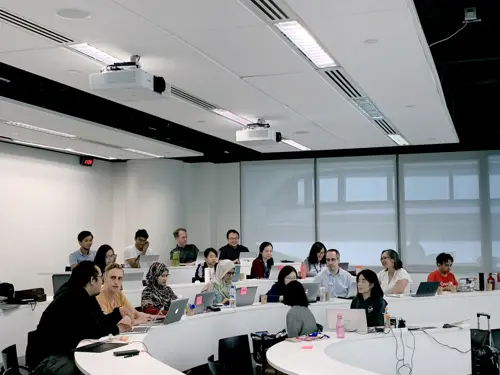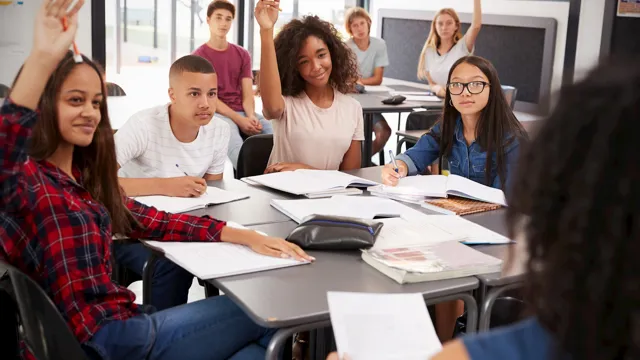You've likely heard both the terms equity and equality before, and you might think they're the same thing. They sound alike, and they're both about fairness, right?
This is not precisely the case. While the two terms seem nearly identical, equity and equality actually have vastly different meanings. Nobody understands this critical distinction better than educators, who know that the difference between equality and equity is significant regarding policy decisions and education legislation.
At the same time, both equity and equality are essential in today’s classrooms. In short, education should be equal. Building on that, education must include equity to ensure that all students are getting the education they need for positive outcomes. To achieve this goal, let's delve into both terms and how they fit into today's schools.
Equity vs. Equality in Education: Fairness vs. Sameness
In the simplest terms, equity refers to an idea of fairness, while equality refers to a view of sameness.
Equality in education means that every student receives the same resources and opportunities. This could refer to the same funding for all schools, the same quality of an abundance of materials and facilities, and/or the same quality of instruction.
Equity means every student gets the opportunities and resources they need, depending on their specific situation.
For example, if a student experiences learning difficulties, that student likely requires a different level of attention and needs more personalized instruction than a student who does not experience learning difficulties. Those students with disabilities need particular accommodations, and students who have not had the same opportunities so far might need exceptional help to get on track with other students. In short, both Equity and Equality are crucial in education.
The terms themselves are not the same. And they can have vastly different implications, especially regarding education policy and decisions that educators make daily. Both equity and equality are essential to ensure the best possible student outcomes.

Why Equity and Equality Matter in Education
While they are not the same concept, both equity and equality are critical in an education context in their own ways.
Importance of Equity in Education
Equity in the classroom ensures that all students get the same positive results regardless of where they started or what unique challenges they might experience.
For educators, this means considering each student’s situation, from learning disabilities to cultural differences and everything in between. Educators who operate classrooms equitably understand that their students will not all respond the same to the same instruction.
This can be difficult for educators because it requires extra attention for students who experience specific challenges.
Educators can operate their classrooms equitably by paying close attention to each student and knowing that some students may require different or more personalized help depending on their past educational experiences and learning styles and abilities.
Legislation can help with equity in today’s classrooms by allocating funds for Individualized Education Plans (IEPs) for students with disabilities. IEPs provide resources for educators to supplement individualized attention to the student, or students, who need it. This plan also ensures that programs exist to help students catch up if they have fallen behind.
Importance of Equality in Education
As crucial as equity is in today’s classrooms, equality is also necessary to ensure that students are at least getting the same base level of attention, resources, and opportunities.
Educators often must pay close attention to equity when students come from different backgrounds and are given unequal opportunities at a young age.
Depending on their parent’s level of education and socioeconomic status, children can start their lives right away without equal access to resources. These problems can grow exponentially as children begin early education and beyond.
Equality in education is necessary for students to have the same opportunities to start off with positive educational outcomes, and equity helps to make sure those equal opportunities are adjusted to make room for students who might need extra help and attention.
On a legislative level, representatives must promote equality in education by ensuring that all schools get the same level of funding, the same amount of materials, and the same quality of instruction and facilities. As we know, equality hasn’t been achieved yet in education, especially in the United States.
Unfortunately, resources are often more abundant for students from wealthier families, and lines are drawn based on class and race, with students of color achieving lower educational outcomes due to unequal opportunities and resources.
And it is not just the students who are left with the results, but the educators themselves must contend with that lack of equality.
Equality + Equity = Education
It is clear that equity becomes crucial to help offset the lack of equality. But without equality, it’s much harder to achieve equity. Performing equity often falls on the shoulders of educators who do not have abundant resources, even when they know what should be done.
But as we continue to seek changes in education legislation and form our classrooms according to the knowledge we gain, it doesn't need to be equity vs. equality in the classroom. We hope that one day we can see both implemented to their full extent, for every student.
